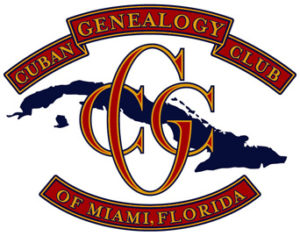Ecclesiastical Records
La Habana Province
About Havana Churches
As of March 2023, we have 23 churches represented in this section. Please also see our Havana Vieja Churches Page.
PLEASE NOTE: The files represented are NOT the complete holdings of these churches, only what we have been able to acquire.
We are very grateful to our members for their generosity and willingness to share their valuable information with us!
IMPORTANT: These files are for personal use only! The use of the information on this site for commercial, political, or any other purpose other than research of your family history and genealogy is strictly forbidden.
Please contact, and credit, the CGC prior to using any part of this collection by sending an email to secretary@cubangenclub.org.
About Havana Province
The Province of La Habana was created in 1878 and is one of the 6 historical provinces in which the island was divided, still under Spanish colonial rule.
La Habana Province, formerly known as Ciudad de La Habana Province, is a province of Cuba that includes the territory of the city of Havana, the Republic’s capital. Between 1878 and 2010, the name referred to another province that covered a much larger area, and was subdivided into the present-day provinces of Artemisa (which also took over three municipalities from Pinar del Río) and Mayabeque.
Before 1961, Havana was the official name only of the central municipality of an area that included at least 6 municipalities: Havana, Marianao, Regla, Guanabacoa, Santiago de las Vegas and Santa María del Rosario-Cotorro. Currently, the territory that occupies the old municipality of Havana (former Villa of San Cristóbal de La Habana) is divided into 6 municipalities (Plaza de la Revolución, La Habana Vieja, Centro Habana, Diez de Octubre, Cerro, Arroyo Naranjo), and Boyeros (Altahabana). The city, as it is conceived at the present time, includes all the provincial territory and also includes the territories of 9 municipalities that were not part of old Havana municipality, which are: Playa, Marianao, La Lisa, Guanabacoa, Regla, Habana del Este, San Miguel del Padrón, Cotorro and Boyeros.
Cuban Church Records and Archives
A presentation on Cuban Church Records and Archives given by Fr. Juan Luis Sanchez on July 14, 2008 is offered here for dissemination with his permission.
A recording of this presentation is available for members on the Members Only-Videos Page
Alphabetical Index Supplement for the Provinces of Habana, Las Villas and Pinar del Rio, Cuba
Source: REVISTA (the quarterly publication of the Cuban Genealogical Society)
An alphabetical index of all the transcriptions from the various parishes of La Habana, Guanabacoa, Cienfuegos, Las Villas, and San Matias de Rio Blanco in Pinar del Rio that was published in REVISTA from 2000 to 2007. This index supplements the previous indices for the provinces of Habana and Las Villas that were published in 1995. In addition, it has the Province of Pinar del Rio, which did not have an index published previously. The first few pages explain how to read the entries in the index.
All of the REVISTA editions are available on CubaGenWeb.
Another Resource
Slave Societies Digital Archive at Vanderbilt University
The Slave Societies Digital Archive (SSDA), directed by Jane Landers at Vanderbilt University, was launched in 2003. It is dedicated to identifying, cataloging, and digitally preserving endangered archival materials documenting the history of Africans and their descendants in the Atlantic World.
Slave Societies teams digitally captured ecclesiastical records of more than 750,000 individuals during almost three years of intensive work in Cuba and Brazil. Beginning in 2007, another grant allowed the group to preserve additional records at new project locations in Brazil, Colombia, and Cuba.
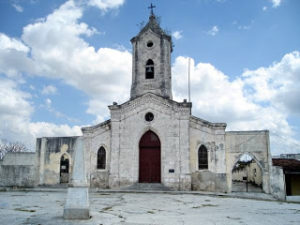
Jesus del Monte Church in Havana, Cuba
The following files were donated by Mariela Fernandez from her collection.
Entries below are from Book 1 (1695 – 1714)
Agustin Diaz de las Nieves (1690)
Maria Diaz de las Nieves (1695)
Catalina Perez Perez (1698)
Julian Perez Perez (1701)
Ana Diaz de las Nieves (1703)
Miguel Perez Perez (1703)
Bartolome Alvarez Diaz (1704)
Pedro Hernandez Alvarez (1706)
Maria Diaz de las Nieves (1708)
Lucas Alvarez Diaz (1709)
Maria Josefa Hernandez Perez (1709)
Miguel Hernandez Perez (1711)
Ana Francisca de Arocha Perez (1713)
Francisco Lausan Bento (1713)
Francisca Alvarez Diaz (1714)
Entries below are from Book 1 (1704 – 1712)
Domingo Garcia Mirabal / Josefa de Arocha (1704)
Miguel Hernandez de Arocha / Maria Perez Calzadilla (1708)
Miguel Perez Calzadilla / Catarina Alonso (1711)
Juan Lausan Martinez / Antonia Francisca Bento Ruiz (1712)
Entries below are from Book 1 (1700 – 1713)
[Parvulo] Hijo de Miguel Perez Calzadilla (1699)
Agustin Diaz de las Nieves (1700)
[Niña] Garcia de Arocha (1713)
Señor del Santo Calvario Church in Havana, Cuba
The following were donated by Mariela Fernandez from her collection.
PLEASE NOTE: These are selected entries based on Mrs. Fernandez’s research.
Bk. 1 (1735 – 1755) – 21 certificates
Bk. 2 (1755 – 1777) – 11 certificates
Bk. 3 (1769 – 1783) – 6 certificates
Bk. 5 (1797 – 1806) – 8 certificates
Bk. 6 (1807 – 1814) – 7 certificates
Bk. 7 (1822 – 1827) – 3 certificates
Bk. 8 (1828 – 1837) – 14 certificates
PLEASE NOTE: These are selected entries based on Mrs. Fernandez’s research.
Bk. 1 (1749 – 1774) – 13 certificates
Bk. 2 (1777 – 1802) – 20 certificates
PLEASE NOTE: These are selected entries based on Mrs. Fernandez’s research.
Bk. 1 (1744 – 1758) – 4 certificates
Bk. 2 (1763 – 1790) – 11 certificates
Bk. 3 (1815 – 1820) – 7 certificates
Bk. 4 (1839 – 1850) – 3 certificates
Bk. 5 (1853 – 1862) – 7 certificates
Bk.6 (1877 – 1895) – 5 certificates
PLEASE NOTE: These are selected entries based on Mrs. Fernandez’s research.
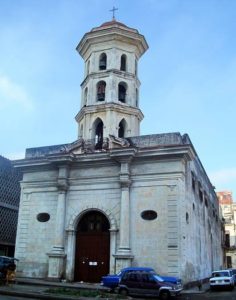
Nuestra Señora de Monserrat Church in Havana, Cuba
The following document was donated by Thomas Santa Cruz from his collection.
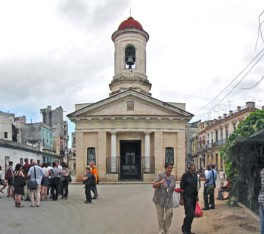
San Judas & San Nicolas Church in Havana, Cuba
The church is located at Calle San Nicolás # 830, Habana Vieja, C. Habana.
The following documents were donated by Sonia Jones (born Hernandez Gonzalez) from her collection.
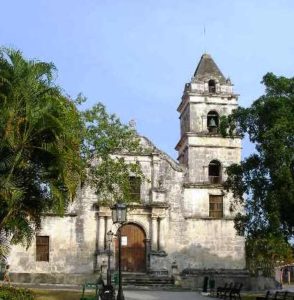
Santa Maria del Rosario Church in Santa Maria del Rosario, Cuba
Nuestra Señora del Rosario is in the city of Santa Maria del Rosario approximately 5 miles from Havana, Cuba, in the present municipality of Cotorro. It is located on Calle 21, between 31 and 33. It was declared a National Monument in 1946.
Church Documents
Documents from Members
The following documents were donated by Sonia Jones (born Hernandez Gonzalez) from her collection.
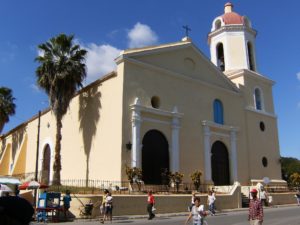
Nuestra Señora de la Asunción Church in Guanabacoa, Cuba
The church is located at Division between Marti and Cadenas in Guanabacoa, Cuba.
The following documents were donated by Alberto Martinez-Ramos from his collection.
Francisca Hernandes Gallardo (1698)
Juan Miguel Ernandez Gallardo (1712)
Maria Josepha Betancour (1713)
Sebastiana Vetancurt Blanco (1722)
Paulina Josefa Hernandes Hernandes (1777)
Ana Desideria de (illegible) Olbis Hernandez (1797)
Andres Hernandez Pulgaron / Juana Martin Alfonso (viuda de Lucas Farel) (1730)
Miguel Hernandez Pulgaron / Sebastiana Vetancourt Blanco (1730)
Geronimo Hernandes Pulgaron / Francisca Hernandes Ruiz (1775)
The following documents were donated by Sonia Jones (born Hernandez Gonzalez) from her collection.
Agustina Alvarez Peres – 12 Sep 1694
Petronila Martin Albares – 19 Mar 1715
Maria Llerena Martina – 1 Mar 1740
Michaela Ramona Luis Candelaria – 10 Jun 1756
Manuel del Castillo de Alba – 21 Ago 1757
Joseph Ramon Hernandes de Llerena – 25 Dec 1760
Pedro del Castillo de Alba – 8 Jun 1761
Francisca Ramona de Linares Martin – 16 Feb 1764
Gregoria del Castillo de Alba – 18 Mar 1764
Francisco Antonio Hernandes Llerena – 7 Jun 1764
Basilio Joseph Ramon de Linares Martines – 22 Jun 1766
Maria Candelaria de la Cruz Ramona de Linares Martin – 9 May 1772
Tomasa Josepha Ramona de Linares Martinez – 26 Dec 1779
Joseph Manuel Hernandes Linares – 3 Mar 1803
Jose Miguel Ciriaco Hernandes Linares – 3 Jul 1806
Maria de Regla Hernandez Linares – 19 Sep 1808
Carlos Martin & Agustina Alvares Peres – 2 Nov 1712
Carlos Pedro Llerena Hernandez Garcia & Maria del Carmen Varroso – 9 Feb 1728
Fph. Ramon Hernandez Llerena & Francisca Ramona Luis Linares Martin – 31 Jul 1786
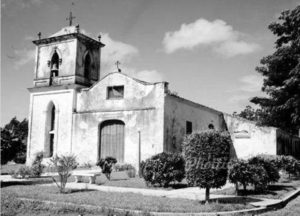
Nuestra Señora del Rosario & San Luis Rey de Francia Church in Guatao, Cuba
The following document was donated by Martha Ibañez Zervoudakis from her collection.
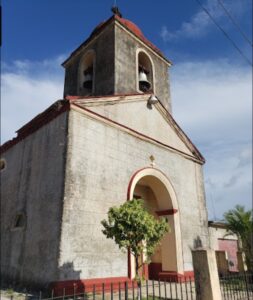
San Luis Rey de Francia Church in Madruga, Cuba
The following document was donated by Sonia Jones (born Hernandez Gonzalez)
from her collection.
Nuestra Señora de Regla Church in Havana, Cuba
Originally established in 1690 as the hermitage of Nuestra Señora de Regla but was officially founded in 1765.
Church Documents on SSDA
Libro 2 de Bautismos de Pardos y Morenos (1823-1831)
Libro 3 de Bautismos de Pardos y Morenos (1831-1839)
Libro 4 de Bautismos de Pardos y Morenos (1839-1848)
Libro 5 de Bautismos de Pardos y Morenos (1848-1859)
Libro 6 de Bautismos de Pardos y Morenos (1860-1874)
Libro 7 de Bautismos de Pardos y Morenos (1874-1887)
Libro 1 de Entierros de Pardos y Morenos (1805-1829)
Libro 3 de Entierros de Pardos y Morenos (1842-1850)
Libro 4 de Entierros de Pardos y Morenos (1850-1866)
Libro 5 de Entierros de Pardos y Morenos (1866-1886)
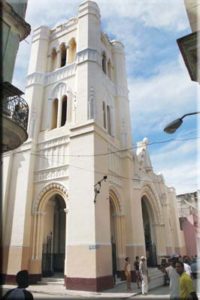
Nuestra Señora de Guadalupe & San Francisco Javier Church in Havana, Cuba
Its origin is shared with two eighteenth-century chapels were erected on land outside the walls under the pastoral care of Bishop Lazo de la Vega: the Christ of Health and Guadalupe, the latter built of wood and thatched in 1716 , and rebuilt and enlarged by Bishop in 1738, designating the Greater Parish Assistant on December 24, 1739, under the title of Our Lady of Guadalupe and San Francisco Javier. The chapel was located in the alley between the alley Suspiro and Aguila Street.
Church Documents
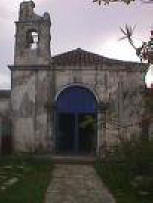
Santo Cristo del Potosi Church in Guanabacoa, Cuba
“The famous shrine of Our Lord Jesus Nazarene of Potosi, which is now the parish church of San Miguel del Padron, was before the year 1644, a chapel belonging to the mayorgazo of Captain Anton Recio, called at the time of Potosi, because it was founded on a hill. Don Martin Salcedo y Oquendo and his wife Juana Recio, dedicated it to the Lord and the Immaculate Conception of the Blessed Virgin, and provided for silver, jewels, vestments and a chaplaincy of three thousand dollars so that Mass could be said every Sunday
and holidays.” **
San Miguel del Padron Church is located at Bernardo Posse # 20323 e/ Calzada de Güines y 3ª, Rpto. La Rosalia, San Miguel del Padrón, C. Habana.
These files were transcribed from a microfilmed copy found by one of our members. This church was closed and the books are now in San Miguel del Padron Church, La Habana.
** Los Primeros Tres Historiadores de la Isla de Cuba, Tomo I, Dr. Rafael Cowley & D. Andres Pego, Editors
Church Documents
San Miguel del Padron Church (San Miguel Arcángel) in San Miguel del Padron, Cuba
One of the oldest buildings in current San Miguel del Padrón. It has undergone many transformations, but its first location was in the hamlet that was to the south of the bay of Havana. It took its name from the “Ingenio San Miguel” and from the chapel with the invocation to the saint of the same name, although it hasn’t been determined at what moment it began to be called “del Padrón”. It is currently called San Miguel Arcángel.
San Miguel del Padron Church is located at Bernardo Posse # 20323 e/ Calzada de Güines y 3ª, Rpto. La Rosalia, San Miguel del Padrón, C. Habana.
Church Documents
“C” Surnames (Books 2-4) (1773-1838)
“L” Surnames (Books 1-8) (1694-1908)
“M” Surnames (Books 1-8) (1694-1908)
The following documents were donated by Sonia Jones (born Hernandez Gonzalez) from her collection.
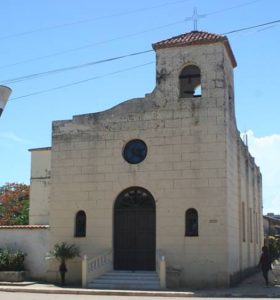
San Pedro Apostol & La Madre del Divino Pastor Church in Batabano, Cuba
These indices were donated by Andres Echazabal from his collection.
Church Documents
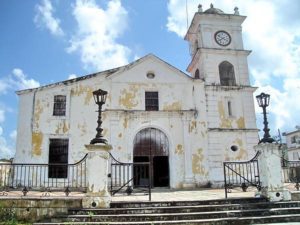
San Felipe & Santiago Church in Bejucal, Cuba
San Felipe y Santiago de Bejucal was founded on May 9, 1714. Prior to the building of the church there was a chapel of wood and guano. The present church was consecrated on Easter Day of 1772. A contemporary document describes it: “The building consists of a nave, two half chapels with a baptistery, sacristy, ten altars and a tower of irregular architecture.”
These indices were donated by Andres Echazabal from his collection.
NOTE: Books numbers 1, 2 and 4 are in very poor condition and as such could not be transcribed.
Church Documents
Baptisms Index – Whites
Book 3 (1770 – 1780)
Book 5 (1794 – 1811)
Book 6 (1811 – 1820)
Book 7 (1821 – 1827)
Book 8 (1828 – 1834)
Book 9 (1835 – 1844)
Book 10 (1844 – 1853)
Book 11 (1853 – 1858)
Book 12 (1858 – 1864)
Book 13 (1864 – 1868)
Book 14 (1869 – 1871)
Book 15 (1874 – 1879)
Book 16 (1879 – 1884)
Book 17 (1884 – 1888)
Book 18 (1884 – 1888)
Book 19 (1884 – 1888)
Book 20 (1884 – 1888)
Book 21 (1884 – 1888)
Marriages Index – Whites
Book 1 (1722 – 1796)
Book 2 (1796 – 1833)
Book 3 (1834 – 1856)
Book 4 (1856 – 1876)
Book 5 (1876 – 1895)
Book 6 (1895 – 1907)
Book 7 (1907 – 1924)
Marriages Index (Whites-General)
Book 1 (1925 – 1932)
Book 2 (1932 – 1953)
Book 3 (1952 – 2006)
Book 4
Book 5
Books 6-7
Marriages Index – Colored
Book 1 (1749 – 1787)
Book 2 (1791 – 1885)
Book 3 (1887 – 1924)
Books 4-5
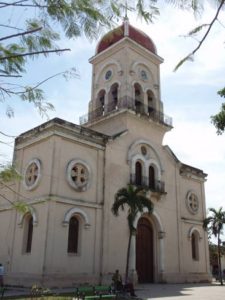
San Julian de los Güines Church in Güines, Cuba
The city of San Francisco Javier and San Julián de los Güines, or simply Güines, is located about 34 miles south of Havana on the banks of the Mayabeque River. It was founded in 1735 next to its church of San Julián. As of January 1, 2011, it belongs to the new Province of Mayabeque. The church is located at C.P. 33900, La Habana.
The following document was donated by Alberto Martinez-Ramos from his collection.
Juan Hernandez Diaz Burial – no date noted*
*This entry is part of a document which contains a June 1, 1767 census of Güines, a listing of the properties in Güines on June 6, 1767 and a listing of the tobacco lands of Pedro de las Carreras in Güines.
The following documents were donated by Sonia Jones (born Hernandez Gonzalez) from her collection.
Facundo Joseph de Jesus Nazareno Enrique del Castillo – 21 Dec 1787
Jose Francisco Antonio Alejo Enriques Acosta – 18 Aug 1811
Antonio Francisco Belnardo Enriques Acosta – 3 Dec 1812
Manuel Antonio Francisco Bernardo Enriques Acosta – 4 Sep 1816
Rafael Francisco Antonio Lusia Enrique Acosta – 31 Dec 1817
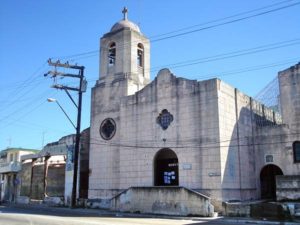
San Geronimo Church in Puentes Grandes, Cuba
The church is located at Calzada Real de Puentes Grandes # 25 in Puentes Grandes, Cuba.
Church Documents on SSDA
Libro 1 de Bautismos de Yndios, Pardos y Morenos (1817-1904)
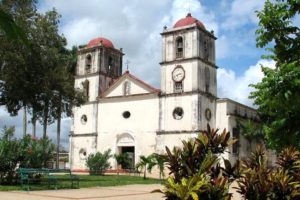
San Antonio Abad Church in San Antonio de los Baños, Cuba
The following documents were donated by Martha Ibañez Zervoudakis from her collection.
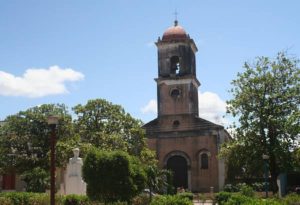
Nuestra Señora de la Paz Church in Nueva Paz, Cuba
The following documents were donated by Alberto Martinez-Ramos from his collection.
Jose Florencio de los Dolores Martinez Martinez (1820)
Isabel Maria de los Dolores Marchena Orvis (1821)
Jose de la Merced Martinez Martinez (1825)
Maria del Socorro Sotolongo Armenteros (1828)
Benito Jose de la Paz Martinez Molina (1836)
Gregoria Josefa de la Paz Martinez Sotolongo (1845)
Manuel Ramon Guerrero Marchena (1848)
Benito Magdaleno de la Trinidad Martinez Martinez (1865)
Jose de Santa Margarita Martinez Garcia / Juana Nepomucena de los Dolores Molina Delgado (1830)
Manuel Longino Guerrero Rubi / Isabel Marchena Orbis (1843)
Diego Martinez Martinez / Maria del Socorro Sotolongo Armenteros (1843)
Benito Jose de la Paz Martinez Molina / Gregoria Josefa de la Paz Martinez Sotolongo (1860)
Jose Benito Martinez Martinez / Generosa Guerrero Hernandez (1902)
Manuel Maria de la Encarnacion Marchena (1819)
Josefa Armenteros (1837)
Trinidad Delgado (1855)
Vidal de Sotolongo (1855)
Jose Silvestre Pio Molina (1856)
Francisco Martinez (1863)
Jose Martinez Garcia (1875)
Manuel Guerrero (1880)
Maria del Socorro Sotolongo Armenteros (1883)
Juana Molina Delgado (1888)
Caridad Martinez Martinez (1891)
Diego Rosario Martinez Martinez (1891)
Salome de la Trinidad Martinez Martinez (1891)
Rosalia Martinez Martinez (1897)
Diego Martinez Sotolongo (1897)
Abelardo Martinez Martinez (1898)
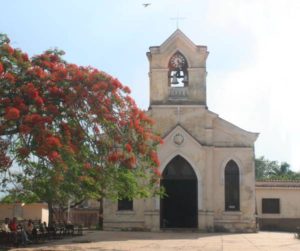
San Pedro Apostol Church in Quivican, Cuba
The following document was donated by Alberto Martinez-Ramos from his collection.
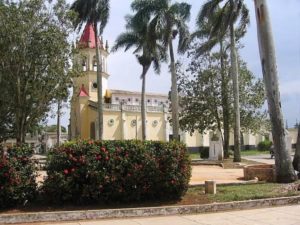
San Jose de las Lajas Church in San Jose de las Lajas, Cuba
These documents were kindly donated by Samuel Martinez Alcalá from his collection.
Book 1 (1788 -1803)
Gabriel Jose del Rosario del Valle Labrador (1790)
Maria Catalina de la Merced Fascenda Carrilo (1796)
Jose Ramon de la Luz Ramon Cardo Fernandez (1796)
Book 2 (1803 – 1814)
Maria Francisca de Orta Gerbás (1810)
Book 3 (Gen’l) (1897 – 1904)
Esteban Padrón Mirabal (1902)
Book 4 (1818 – 1826)
Jose Ramon Ines Cardo Delgado (1820)
Book 6 (1829 – 1836)
Candida del Rosario del Valle Fascenda (1831)
Book 9 (1851 – 1858)
Maria Josefa Arias Basallo (1856)
Book 13 (1868 – 1875)
Maria Jacinta de Jesus Perez Valle (1870)
Book 18 (1887 – 1889)
Manuel Raymundo Ildefonso Martinez Villalba (1887)
Book 19 (1889 – 1890)
Diego Rodriguez Arias (1889)
Book 13 (Gen’l) (1928 – 1930)
Juana Rodriguez de la Guardia (1929)
Book 16 (Gen’l) (1936 – 1939)
Ignacio Martinez Cardo (1937)
Santo Cristo de La Salud Church in La Salud, Cuba
These indices were kindly donated by Andres Echazabal from his personal research.
Note: Books 2 and 3 (which cover 1809 to 1839) are not included as they are missing from the archives themselves.
Church Documents
Index for Baptisms (Whites)
Bk 1 (1829-1834)
Bk 4 (1839-1854)
Bk 5 (1855-1865)
Bk 6 (1865-1871)
Bk 7 (1871-1877)
Bk 8 (1877-1882)
Bk 9 (1882-1889)
Bk 10 (1889-1893)
Bk 11 (1893-1896)
Bk 12 (1896-1904)
Bk 13 (1904-1907)
Index of Marriages (Whites)
Bk 1 (1803-1904)
Bk 2 (1865-1885)
Bk 3 (1885-1892)
Index of Marriages (Whites-General)
Bk 1 (1896-1905)
Bk 2 (1908-1946)
Bk 3 (1952-1960)
Index of Marriages (Colored)
Bk 1 (1803-1904)
Bk 2 (1905-1908)
Bk 3 (Undated)
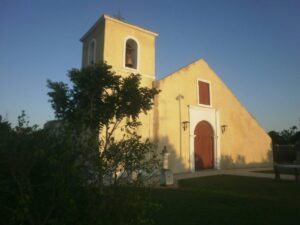
Nuestra Señora del Rosario Church in Pipian, Cuba
The following documents were donated by Alberto Martinez-Ramos from his private collection.
Juana Nepomucena Dolores Molina Delgado (1811)
Manuel Longino de la Caridad Guerrero Rubi (1812)
Maria Victoria Hernandez Martinez (1851)
Eusebio Jose Benito Martinez Martinez (1877)
Aleja Generosa Guerrero Hernandez (1882)
Silvestre Jose Molina Curbelo / Maria de la Trinidad Delgado Galvez (1810)
Manuel Jose Hernandez Oramas / Margarita de Regla Martinez Bravo (1841)
Manuel Ramon Guerrero Marchena / Maria Victoria Hernandez Martinez (1871)
Expediente matrimonial de Ramon F Enrique and Petrona Acosta – 17 Jan 1842 – Part 1
Expediente matrimonial de Ramon F Enrique and Petrona Acosta – 17 Jan 1842 – Part 2
The following documents were donated by Sonia Jones (born Hernandez Gonzalez) from her collection.
Facunda Maria Acosta Linares – 18 Dec 1819
Ramon Francisco Manuel Enriques Acosta – 7 Sep 1827
Manuel Victorino de la Caridad Enrique Acosta – 27 Mar 1843
Maria Felicia Dorotea Enrique Curbelo – 11 Feb 1844
Maria Marina de Regla Enrique Acosta – 27 Jul 1844
Jose Eduvige de la Caridad Enrique – 4 Nov 1847
Teleforo Enrique Curbelo – 6 Jan 1849
Maria de la Encarnacion Enrique Curbelo – 4 Apr 1849
Juan Demetrio Enrique Acosta – 22 Dec 1849
Maria Demetria del Rosario Enrique Curvelo – 5 Jan 1850
Francisco Aquilino Enrique Acosta – Jan 1851
Gregorio Enrique Curbelo – 9 Jun 1851
Jacinto Roque Enrique Curbelo – 24 Aug 1851
Simon de la Caridad Enrique Acosta – 8 Mar 1851
Maria Celmencia de la Caridad Enrique Acosta – 1 Dec 1852
Maria Lugarda Fernanda Enrique Curbelo – 31 May 1853
Francisco Jose de la Trinidad Enrique Curbelo – 21 Jun 1853
Juan Amalio de la Caridad Enrique Acosta – 7 Aug 1860
Manuel Antonio Federico Bernardo Enrique Acosta & Juana Maria Francisca del Carmen Curbelo Montero – 4 May 1843
Francisco Enrique Acosta & Maria de la Encarnacion Curvelo Montero – 19 Mar 1849
Antonio Hernandez Gil & Maria Manuela Enrique Acosta – 20 Sep 1849
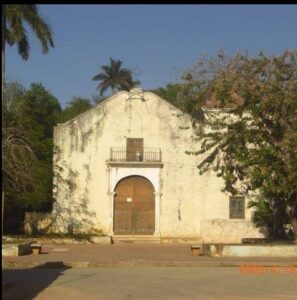
Nuestra Señora de los Remedios Church in Managua, Cuba
It is located at the southern end of the Arroyo Naranjo Municipality, in the Managua neighborhood on María Elena Baluja Street.
The following documents were donated by Sonia Jones (born Hernandez Gonzalez) from her collection.
A note about these documents, as per Sonia:
The church did not have the official forms to document the original information, so the priest allowed the researcher to work with the archivist of the church to transcribe the information from the original books. I also received pictures of each section and book page, so I have personally been able to verify the information of all transcriptions. Still, I am not at liberty to share the pictures of the original data with anyone.
Maria de Regla Peraza Gutierrez (1756)
Maria Theresa Peraza Gutierrez (1758)
Maria del la Concepcion Peraza Gutierrez (1760)
Juana Maria Peraza Gutierrez (1764)
Maria Candelaria Peraza Gutierrez (1766)
Maria de Jesus Antonia Eulogia Acosta Peraza (1777)
Maria de Jesus Antonia del Rosario Acosta Peraza (1778)
Antonia Jerbacio Acosta Peraza (1780)
Manuel Antonio del Rosarioa Acosta Peraza (1784)
Maria Manuela Josefa Antonia Acosta Peraza (1788)
Juan de Jesus Antonio del Rosario Acosta Peraza (1790)
Jose Acosta Peraza (1792)
Jose de Jesus Antonio del Rosario Acosta Peraza (1798)
